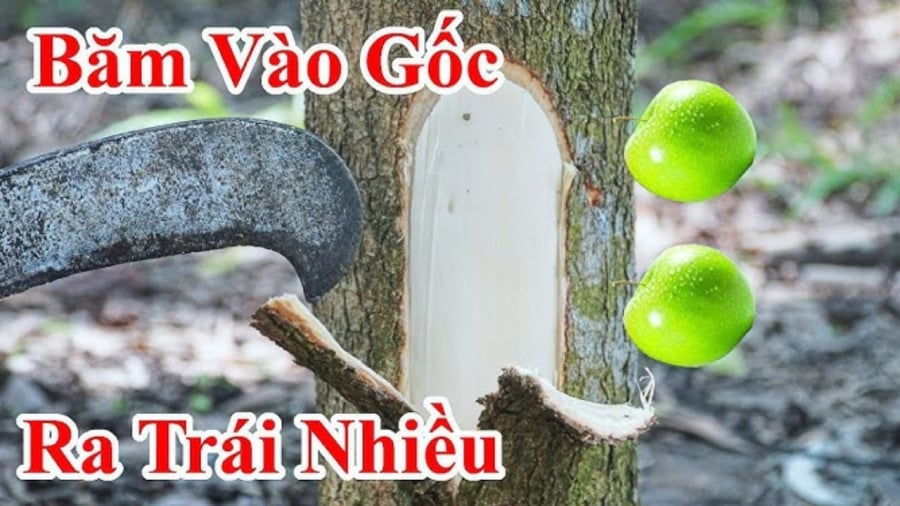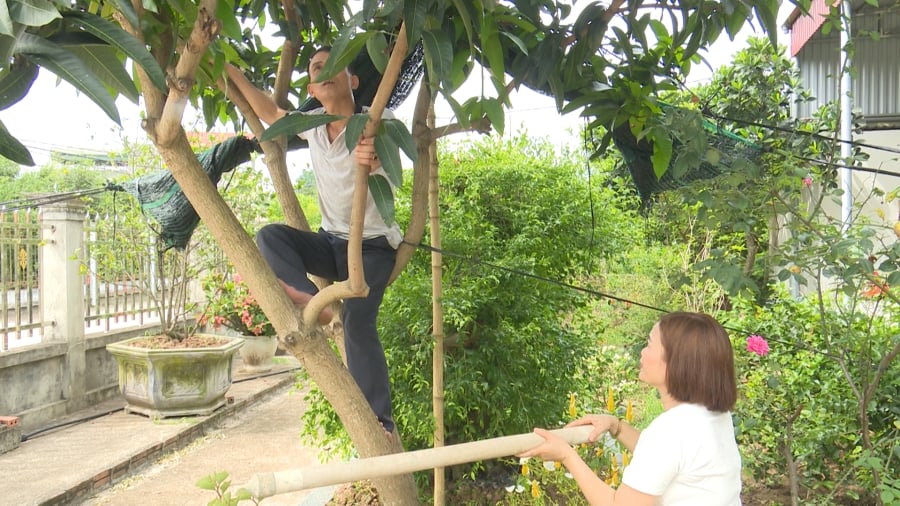The ancient ritual of “Examining the Fruit Tree” is a fascinating yet eerie tradition that was once practiced in some northern villages of Vietnam. This custom involved a peculiar form of punishment for fruit trees that failed to bear fruit or produced a scant yield. On the 5th of May, believed to be an auspicious day, villagers would engage in this ritual to encourage the trees to be more productive in the upcoming season.

Examining the Fruit Tree: A Bizarre Ancestral Ritual
The word “examining” here implies punishment and trial. The “fruit tree” refers to the fruit-bearing trees in one’s orchard. On this specific day, if a tree bore no or little fruit, it was believed to be lazy and needed to be reprimanded to reform and produce more fruit in the following season.
The owner of the orchard would use a switch, often made of mulberry or bamboo, and stand before the tree, shouting angrily and even striking the tree’s trunk several times. In some places, they would threaten to cut down the tree with a knife or hatchet if it didn’t bear fruit the next season. This ritual was often performed in the presence of the entire family, with a stern warning:
“Tree, you didn’t bear fruit last year. If you don’t produce fruit this year, I’ll cut you down and plant another tree in your place.”
The intention was not to destroy the tree but to create a spiritual stimulus, encouraging the tree to flourish and bear fruit.
Why Did This Ritual Inspire Fear?
1. Ominous and Violent Undertones
Although this ritual may seem harmless, it involved threatening and punishing nature. The sight of someone wielding a switch, angrily shouting at a tree, and striking its trunk could be unsettling, especially for children. In the folk belief system, trees are considered living entities with souls, so examining the tree could be likened to torturing a living being.
2. A Mix of Religion and Superstition
Ancestors believed that trees failing to bear fruit were influenced by evil spirits, a lack of divine blessing, or even possession by malevolent entities. Hence, striking and threatening to cut down the tree was a way to expel negative forces and invite divine protection. This blend of physical action and spiritual belief lent an air of mystery and fear to the ritual, as it involved an invisible struggle between humans and supernatural forces.
3. Evoking a Sense of Injustice and Retribution
There are tales warning that excessive punishment of the tree, leading to its death or severe damage, could bring misfortune to the family. Some families experienced crop failures or sudden illnesses after harshly examining their trees.

A Fading Tradition, but a Lasting Memory
Today, the tradition of Examining the Fruit Tree has largely faded, especially in urban areas. However, in some traditional villages, the elderly still recount this peculiar custom, evoking a time when humans lived in closer harmony with nature, albeit with a hint of mysterious fear. For the younger generation, this folk belief is a unique piece of cultural heritage—strange and frightening yet offering insight into the spiritual beliefs and philosophies of their ancestors.
The Dragon Boat Festival is not just about eliminating pests, feasting, and family gatherings; it is also a time when humans connect with the universe, with the interplay of yin and yang. While the ritual of Examining the Fruit Tree may no longer be widely practiced, it remains a part of our cultural memory, reminding us to cherish nature, respect trees, and embrace the simple yet profound wisdom of our forebears.

































